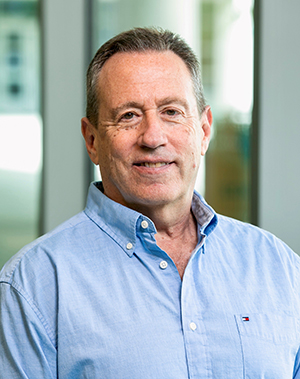In This Story

Director of the Schar School of Policy and Government’s Center on Nonprofits, Philanthropy, and Social Enterprise Alan J. Abramson is a National Academy of Public Administration (NAPA) fellow. The center works to improve the effectiveness of nonprofit organizations, philanthropy, and social enterprise through research, training, public education, and other initiatives that engage those who care about these important institutions and activities. The center also offers graduate degree courses in nonprofit management and recently assumed directorship of the George Mason University-Nonprofit Employment Data Project, which monitors the nonprofit economy. The following is an edited NAPA interview with the professor.
What area of public policy interests you the most and why?
As a researcher, my major area of focus has been the nonprofit sector and philanthropy, especially the relationship between nonprofits and government. While many in the U.S. see the country’s nonprofits as comprising an independent sector, I continue to be impressed by the extensive interdependence of the nonprofit and government sectors. Most of my students are surprised to learn that, in the aggregate, nonprofits receive more of their funding from government than from all sources of philanthropy. Understanding nonprofits’ relationship to government is arguably as important as understanding their relationship to philanthropy.
In addition to nonprofits, I have a longstanding interest in “social enterprises,” double-bottom-line organizations that seek to both “do good” and “make money,” and which can come from the nonprofit, business, or even government sectors. Some argue, in fact, that hybrid, social enterprises now constitute a fourth sector of our society, alongside the government, nonprofit, and business sectors. My particular interest is in public policy toward social enterprise and how government can be appropriately supportive of these hybrid entities that can tap important, market-oriented resources to do good and complement government’s own, tax-based funding sources.
Who has been a key mentor or source of inspiration for you?
There are several people who I count as sources of inspiration and mentors, including: Leon Sigal, an important undergraduate professor at Wesleyan University; David Mayhew, my dissertation adviser at Yale; Lester Salamon, my program director at the Urban Institute; Elizabeth Boris, who I worked with at the Aspen Institute; and Virginia Hodgkinson, who chaired my program’s Governing Council at the Aspen Institute.
Working with Salamon, in particular, was critical in shaping my professional career. I worked with him first for a year at the National Academy of Public Administration on a wonderful project, “A Presidency for the 1980s,” that developed recommendations regarding the staffing of the presidency.
Along with the NAPA project, I worked early on with Salamon on developing the concept of “third-party,” or “shared” governance, the reality that responsibility for implementing government programs often engages networks of organizations from all levels of government—federal, state, and local—as well as the nonprofit and business sectors. This work attracted the interest of nonprofit and foundation leaders who wanted help in better understanding the complicated relationship of the nonprofit sector and government, and who, specifically, commissioned Salamon and me to study the impact on nonprofits and philanthropy of the Reagan administration’s federal budget cuts. This work in the early 1980s began both Salamon and me on very rewarding careers in nonprofit research.
What is your favorite class you have ever taken and why?
The couple of undergraduate classes I took at Wesleyan with Lee Sigal still stand out. I remember, in particular, some of the short writing assignments he gave us: “What is balanced in the balance of power?” “Why did Daniel Patrick Moynihan make the recommendations he did in the Moynihan report that he produced in the mid-1960s?” In Sigal’s classes, I was particularly taken with discussion of Graham Allison’s different models of decision making, including alternatives to rational approaches. Perhaps not surprisingly, I continue to be interested not only in explanations of behavior that emphasize rationality but also in those which highlight organizational routines, incentives, and culture; “garbage cans”; and similar not so rational factors.
What is your favorite hobby or activity that you enjoy doing in your free time?
While I enjoy my (too infrequent) trips to the gym, lately I have been consumed with completing the daily Spelling Bee, Wordle, and Mini-Crossword in the New York Times games app.
What is the best movie you have seen?
As a child of the 1960s, my favorite movies are “The Graduate” and “Harold and Maude.”
What was your dream job as a child?
I always wanted to be a college professor. I’m living that dream. My other dream “job” was to be a father, which, as a gay man, I wasn’t sure was ever going to happen. However, 22 years ago my husband and I adopted our son at his birth. So, I am also living the dream—and reality—of being a parent.
Reprinted with the permission of NAPA.
